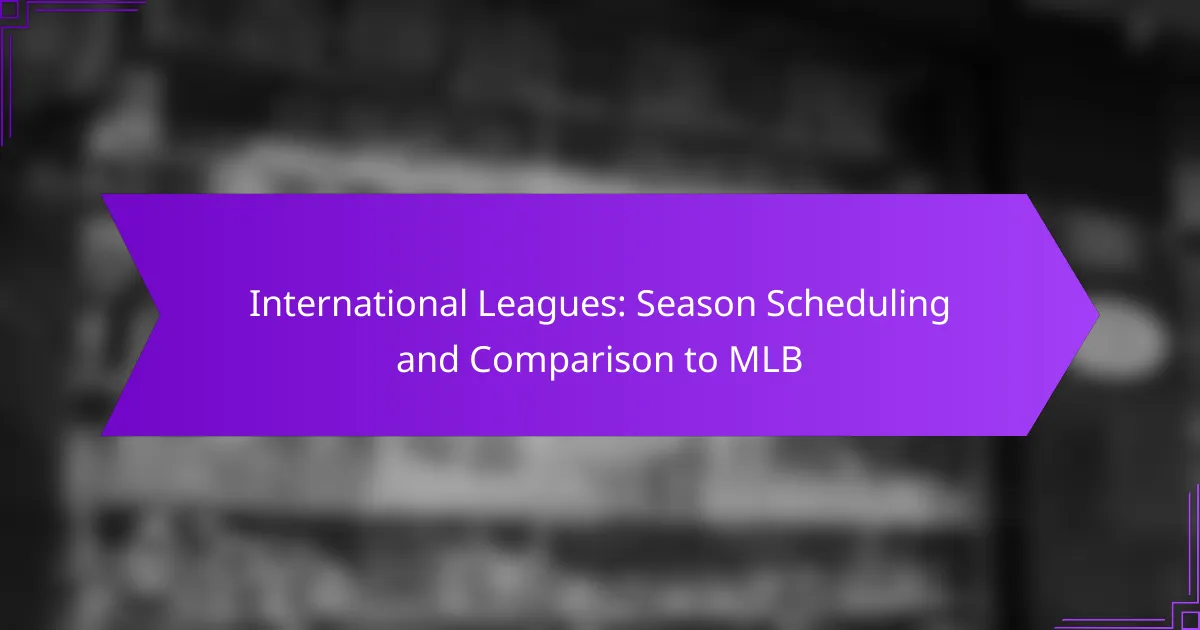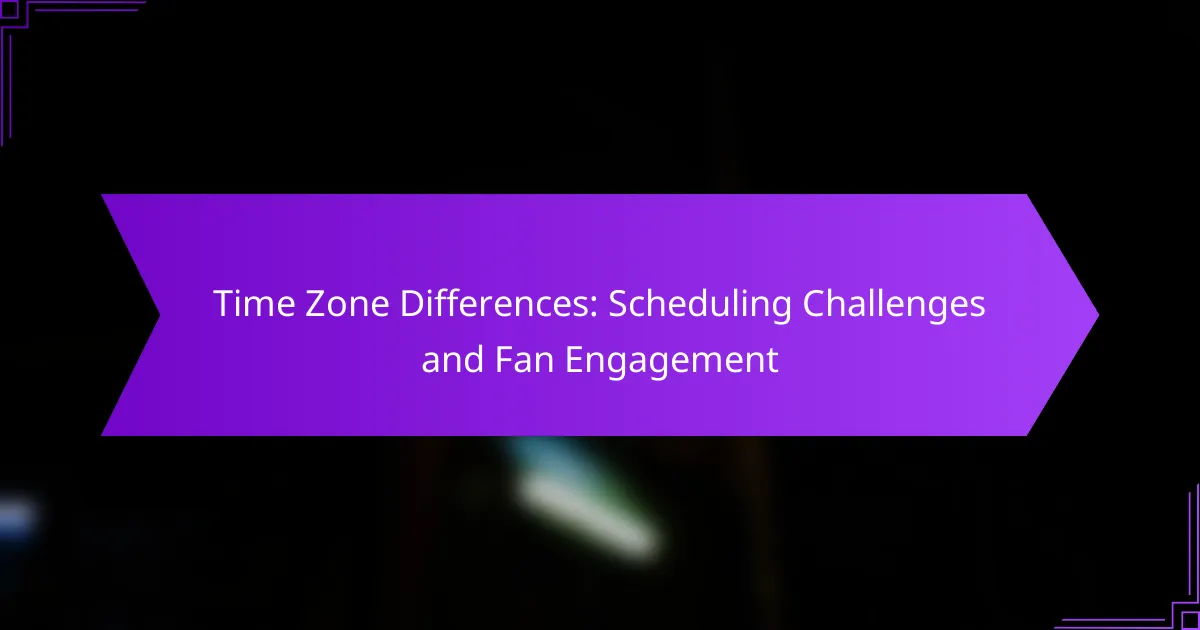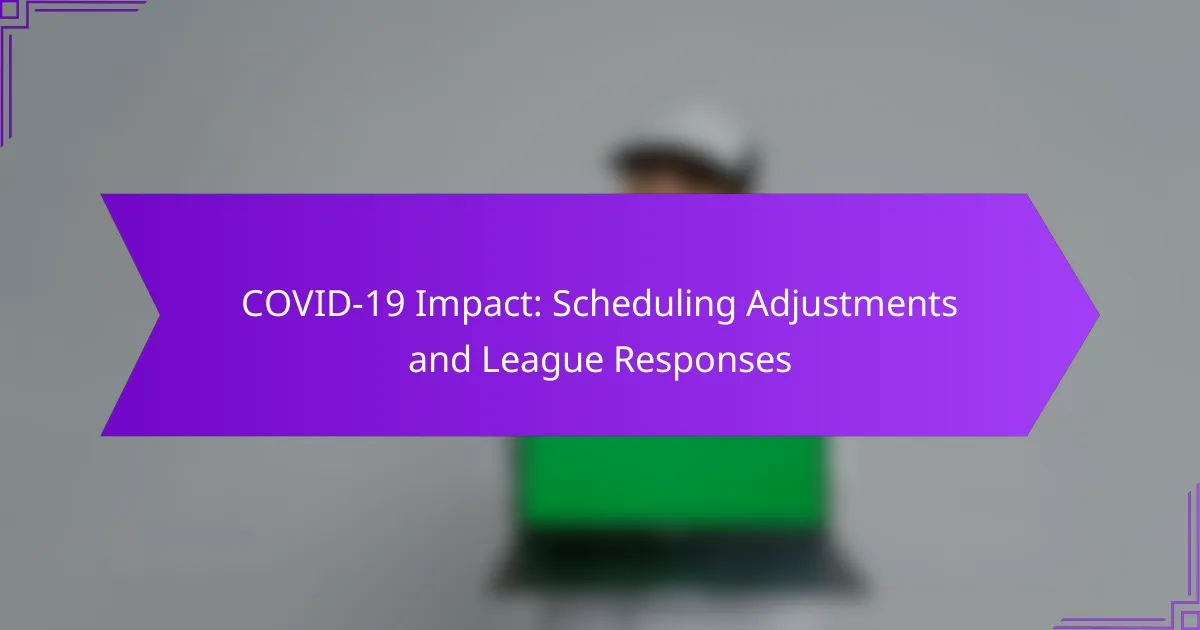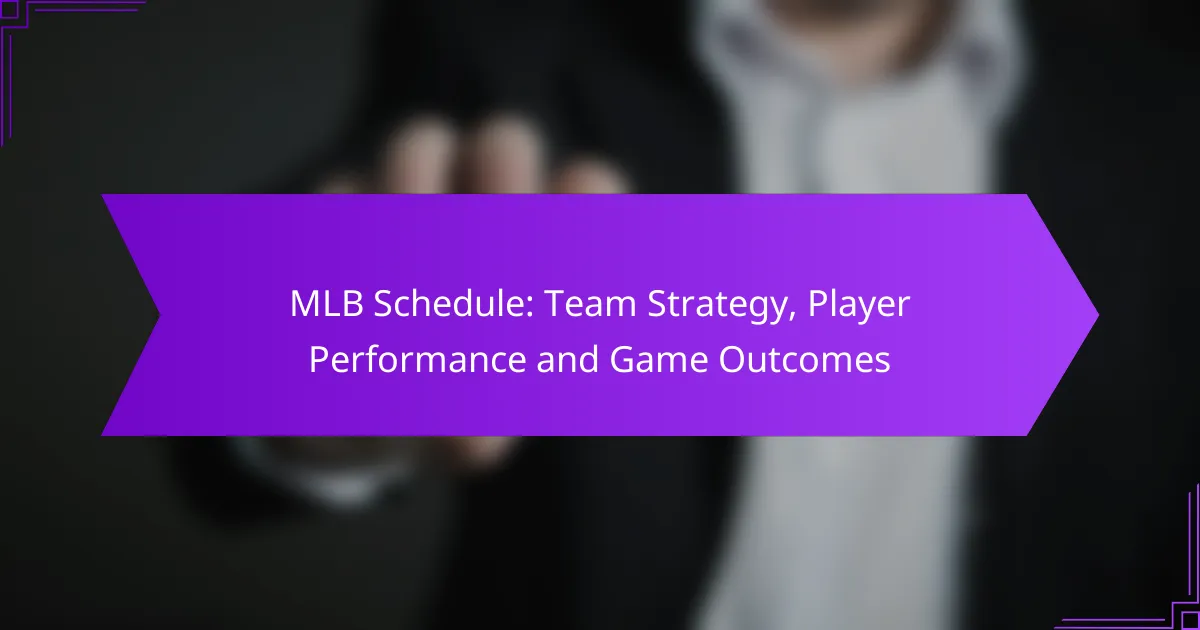International baseball leagues feature diverse season schedules that contrast sharply with Major League Baseball’s consistent April to October timeline. Leagues such as Nippon Professional Baseball in Japan, the Mexican League, and the Australian Baseball League each have unique structures and schedules influenced by local climates and cultural events. These differences extend beyond scheduling to player contracts, which vary significantly in terms of length, salary, and movement regulations, highlighting the complexities of the global baseball landscape.
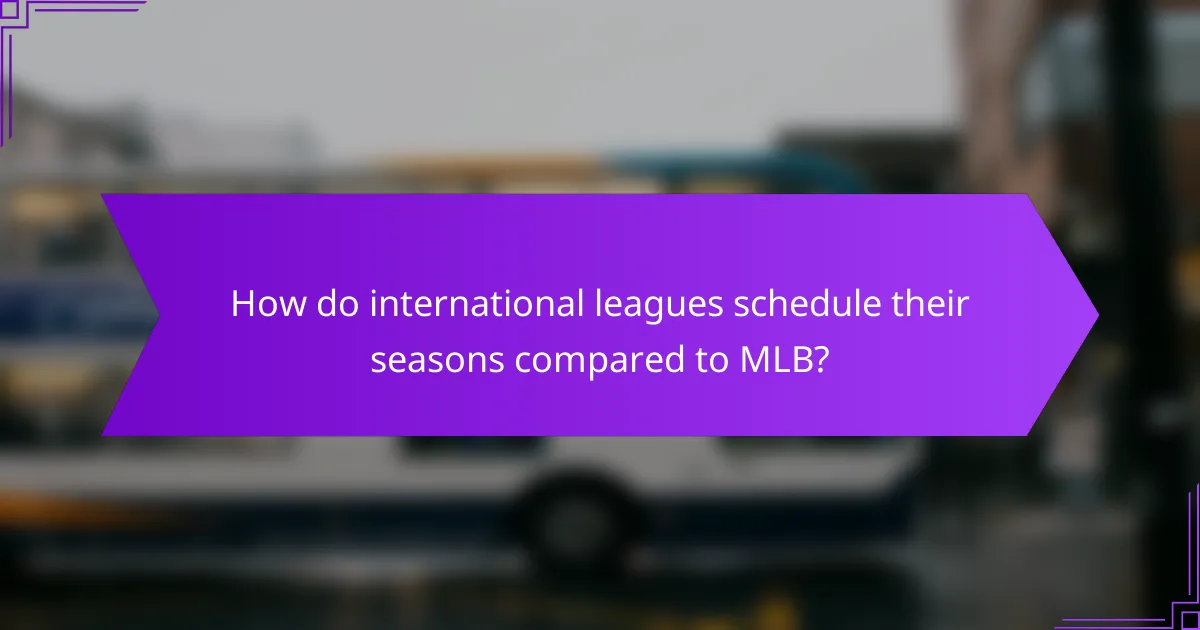
How do international leagues schedule their seasons compared to MLB?
International leagues typically have varied season schedules that differ significantly from Major League Baseball (MLB). While MLB operates on a consistent April to October timeline, many international leagues adapt their schedules based on local climates, cultural events, and regional preferences.
International league season timelines
International leagues often schedule their seasons according to regional climates and local traditions. For instance, European leagues like the English Premier League or La Liga usually run from August to May, allowing for winter breaks. In contrast, leagues in warmer climates, such as those in Latin America, may follow a calendar year format, starting in January and concluding in December.
Additionally, some leagues may incorporate playoffs or tournaments that influence their overall timelines. For example, the Caribbean Series in baseball occurs annually in February, impacting the scheduling of domestic leagues in the region.
MLB season structure
The MLB season is structured around a 162-game schedule, typically starting in early April and ending in late September, followed by playoffs in October. This format allows teams to play a consistent number of games against a variety of opponents, promoting a balanced competition throughout the season.
MLB also includes an All-Star break in July, which provides a mid-season pause for players and fans. This break is a key feature of the MLB schedule, contrasting with many international leagues that may not have a similar mid-season interruption.
Key differences in scheduling
One of the primary differences in scheduling between international leagues and MLB is the length of the season. While MLB spans approximately six months, many international leagues may have shorter seasons, often lasting around eight to ten months, depending on the league’s structure and playoff format.
Another notable difference is the timing of breaks. MLB’s All-Star break is a unique feature not commonly found in many international leagues, which may have different approaches to mid-season pauses. Furthermore, international leagues often adjust their schedules to avoid conflicts with major local events, such as national holidays or festivals, which can lead to irregularities in game timings.
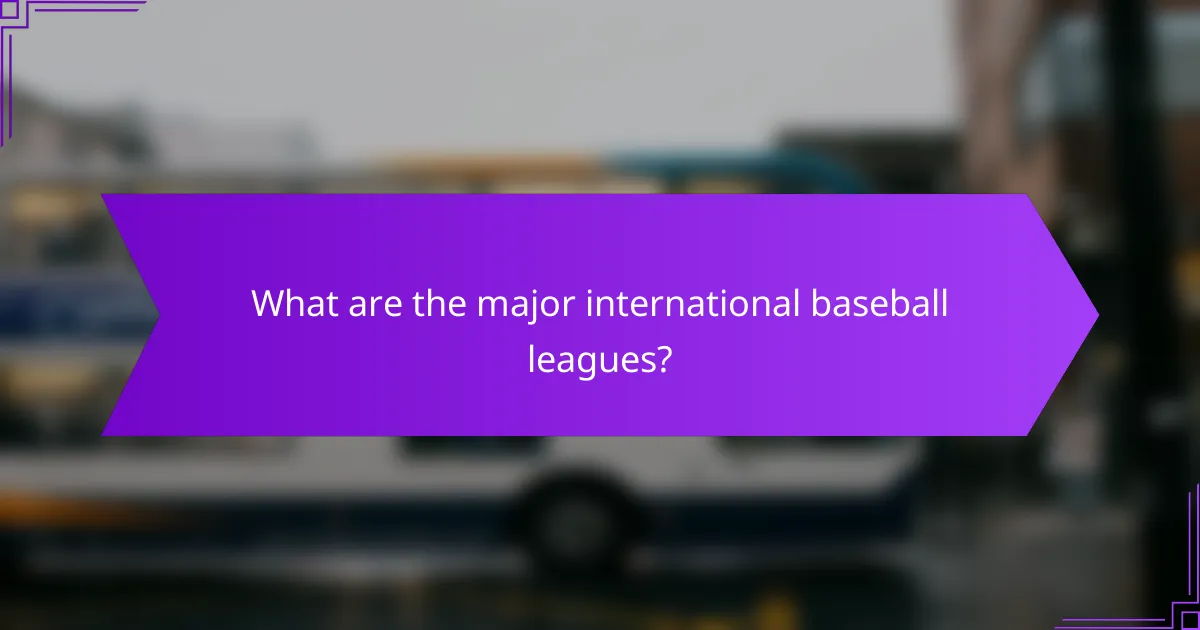
What are the major international baseball leagues?
The major international baseball leagues include Nippon Professional Baseball in Japan, the Mexican League, and the Australian Baseball League. Each of these leagues has its own unique structure, schedule, and level of competition, making them distinct from Major League Baseball (MLB) in the United States.
Japanese Nippon Professional Baseball
Nippon Professional Baseball (NPB) is Japan’s top professional baseball league, consisting of two main divisions: the Central League and the Pacific League. The season typically runs from late March to late October, featuring a regular season followed by playoffs culminating in the Japan Series.
NPB games are known for their passionate fan culture, with teams often having dedicated cheer squads. The league operates under its own set of rules and regulations, which can differ from MLB, such as the designated hitter rule being used in both leagues but with variations in implementation.
Mexican League
The Mexican League is a professional baseball league that operates in Mexico, featuring teams from various cities across the country. The season generally runs from April to August, followed by playoffs that determine the league champion.
This league is considered a Triple-A level in terms of competition, often serving as a stepping stone for players aiming for MLB. The Mexican League has a unique structure, including a promotion and relegation system, which adds an extra layer of competitiveness not typically found in MLB.
Australian Baseball League
The Australian Baseball League (ABL) is a relatively newer league that began in 2010 and features teams from Australia and New Zealand. The ABL season usually runs from November to February, coinciding with the MLB offseason, allowing players to showcase their talents during this period.
The ABL is known for its focus on developing local talent and providing opportunities for international players. While the league has made strides in improving its competitiveness, it is still considered a lower-tier league compared to NPB and MLB, but it offers a unique experience for fans and players alike.
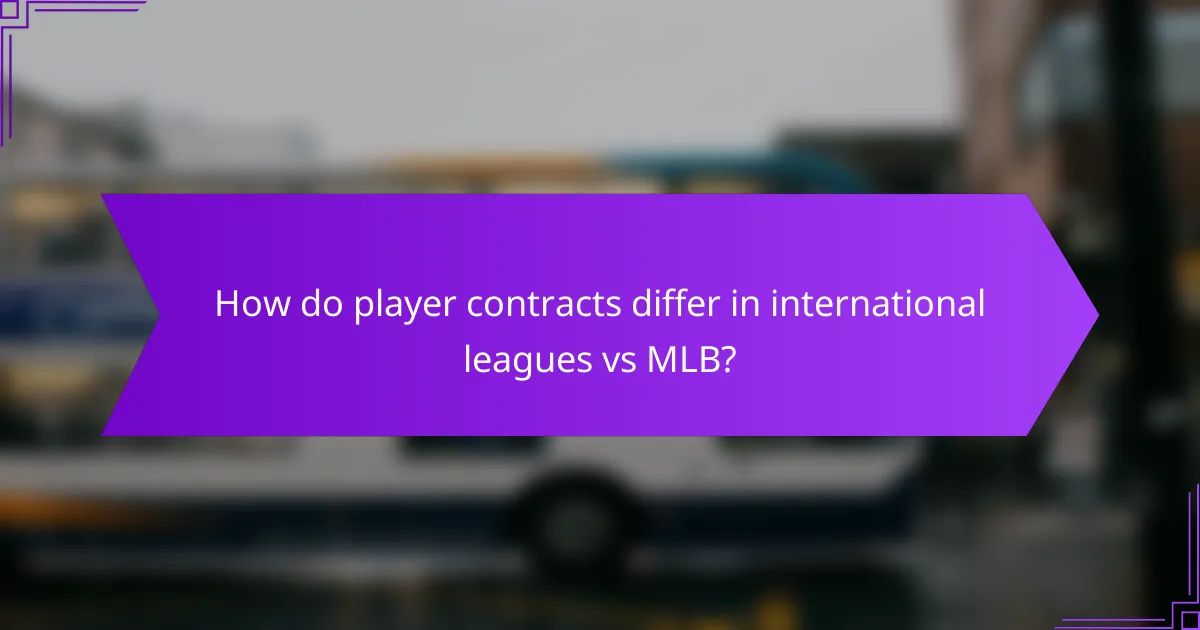
How do player contracts differ in international leagues vs MLB?
Player contracts in international leagues often vary significantly from those in Major League Baseball (MLB) in terms of length, salary structures, and regulations governing player movement. Understanding these differences is crucial for players and agents navigating the global baseball landscape.
Contract lengths and terms
In MLB, player contracts typically range from one to ten years, with many players signing multi-year deals that provide financial security. In contrast, international leagues may offer shorter contracts, often between one to three years, with options for extensions or renewals based on performance.
Additionally, international contracts may include clauses that allow for early termination under specific conditions, which is less common in MLB contracts. Players should carefully review these terms to understand their rights and obligations.
Salary structures
MLB salaries are generally higher than those in most international leagues, with many players earning millions annually. International leagues, however, often feature a wider range of salaries, with top players earning substantial amounts while others may receive modest compensation, sometimes in the low tens of thousands of USD.
Moreover, salary structures can differ, with some leagues offering performance bonuses or incentives tied to individual and team achievements. Players should consider these factors when evaluating offers from different leagues.
Player movement regulations
MLB has a well-defined system for player movement, including free agency and trade regulations that allow players to change teams after fulfilling contract obligations. In contrast, international leagues may have varying rules regarding transfers, often influenced by the league’s governing body and local regulations.
For instance, some leagues may impose transfer fees or require players to negotiate release clauses with their current teams. Understanding these regulations is essential for players seeking to move between leagues or teams, as they can impact career decisions significantly.
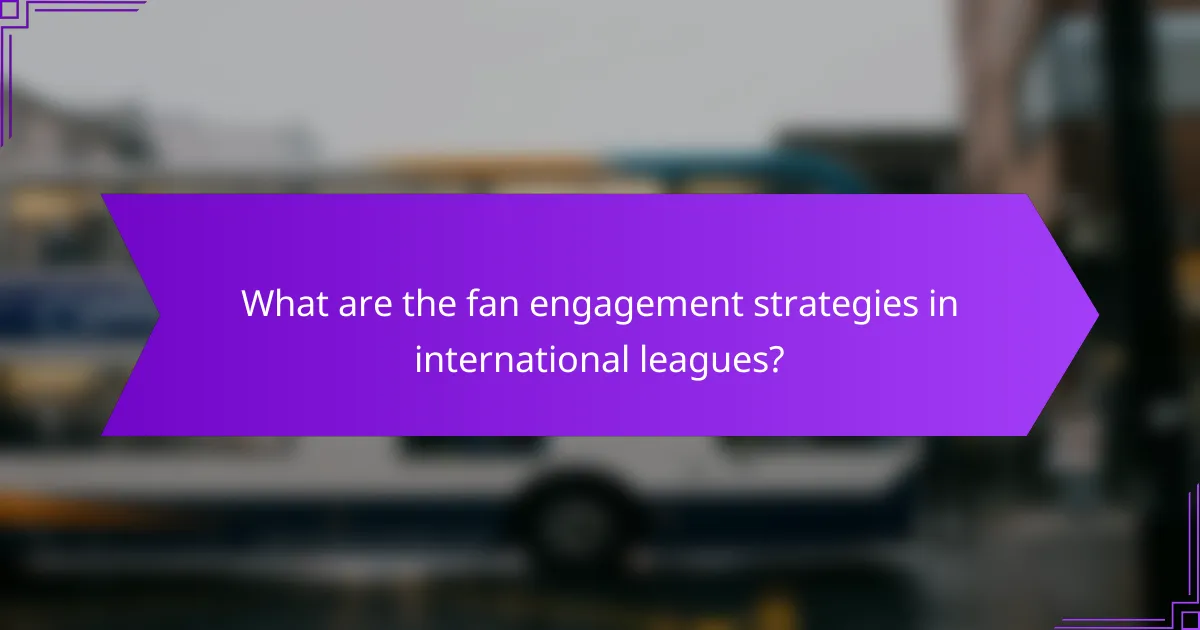
What are the fan engagement strategies in international leagues?
International leagues utilize various fan engagement strategies to enhance the spectator experience and build loyalty. These strategies often include community outreach, digital initiatives, and innovative merchandising approaches that resonate with local cultures.
Community outreach programs
Community outreach programs are essential for international leagues to connect with local fans. These initiatives often involve partnerships with schools, charities, and local businesses to promote sports participation and social responsibility.
For example, leagues may organize youth clinics, charity events, or school visits by players, fostering a sense of belonging and encouraging young fans to engage with the sport. Such programs can significantly boost attendance and local support.
Digital engagement initiatives
Digital engagement initiatives leverage technology to enhance fan interaction and experience. Many leagues utilize social media platforms, mobile apps, and websites to provide real-time updates, behind-the-scenes content, and interactive features.
For instance, live polls during games, player Q&A sessions, and exclusive content can keep fans engaged and invested in the league. Effective digital strategies can lead to increased online following and higher attendance at games.
Merchandising approaches
Merchandising approaches in international leagues focus on creating unique products that resonate with fans. This includes team jerseys, memorabilia, and locally-themed merchandise that reflect cultural significance.
Leagues often collaborate with local artists or brands to develop exclusive items, enhancing the emotional connection fans feel toward their teams. Offering limited-edition products can also drive sales and create buzz around the league.
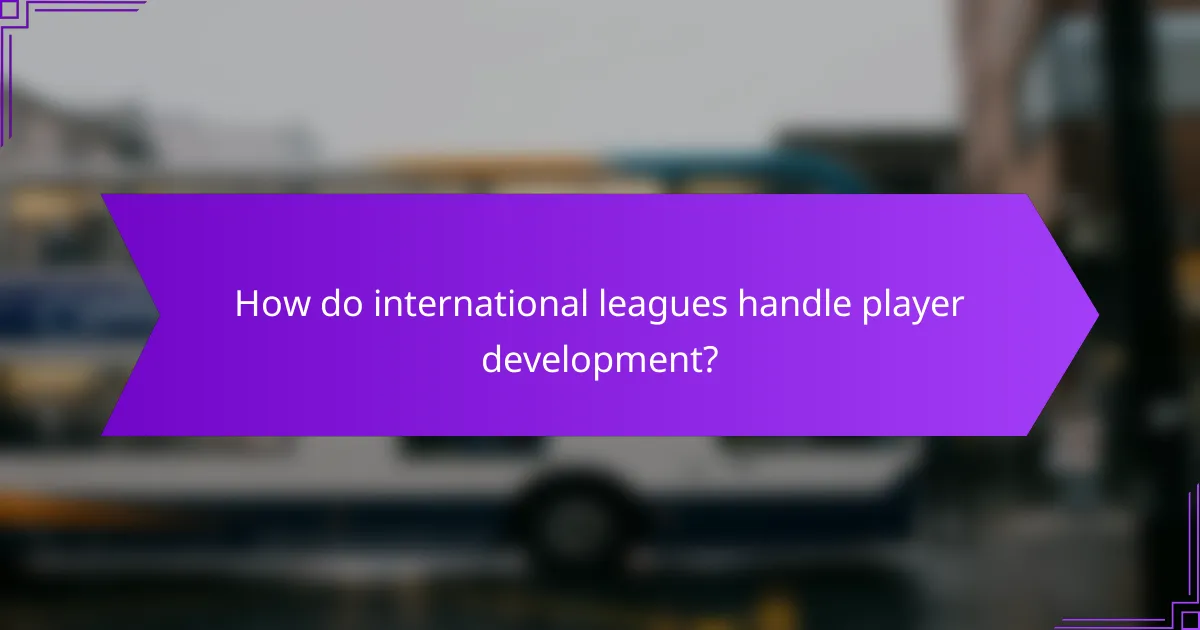
How do international leagues handle player development?
International leagues focus on player development through structured programs, academies, and partnerships with major league teams. These systems are designed to nurture talent from a young age, ensuring players are well-prepared for professional competition.
Developmental leagues and academies
Developmental leagues and academies play a crucial role in international player development. These institutions provide young athletes with training, coaching, and competitive opportunities tailored to their skill levels. For example, leagues in countries like Japan and South Korea have established academies that focus on both technical skills and physical conditioning.
Many European countries also invest in youth academies, often affiliated with professional clubs. These academies not only develop players but also instill a strong understanding of the game, preparing them for the transition to higher levels of competition.
Partnerships with MLB teams
International leagues often form partnerships with MLB teams to enhance player development. These collaborations can include talent exchanges, coaching clinics, and shared resources, allowing players to gain exposure to different playing styles and training methods. For instance, some Latin American countries have agreements with MLB teams to facilitate scouting and training opportunities.
Such partnerships can also lead to financial support for local leagues, helping them improve facilities and training programs. This mutual benefit fosters a stronger pipeline of talent from international leagues to the MLB.
Scouting and recruitment practices
Scouting and recruitment practices in international leagues are critical for identifying and nurturing talent. Many leagues employ scouts who travel extensively to observe young players in various competitions and tournaments. This proactive approach helps teams discover promising athletes before they reach professional levels.
Additionally, international leagues often host showcases and tournaments that attract scouts from MLB teams. These events provide a platform for players to demonstrate their skills and gain visibility, increasing their chances of being recruited. Understanding the nuances of these practices can significantly impact a player’s career trajectory.

What are the financial implications of international leagues?
International leagues can significantly impact the financial landscape of baseball, offering diverse revenue streams and varying costs compared to Major League Baseball (MLB). Understanding these implications helps teams and investors navigate the global market effectively.
Revenue sources
International leagues generate revenue from multiple sources, including ticket sales, merchandise, sponsorships, and player transfers. Ticket sales can vary widely, with some leagues attracting millions of fans while others may draw smaller crowds, impacting overall income.
Merchandise sales often reflect the popularity of teams and players, contributing significantly to revenue. Sponsorship deals can also be lucrative, especially in markets with high visibility and engagement, leading to substantial financial support for teams.
Broadcasting deals
Broadcasting deals are a critical revenue source for international leagues, often involving partnerships with local and global networks. These agreements can range from regional broadcasts to international streaming services, expanding the audience reach and potential income.
The value of broadcasting deals varies significantly by region, with leagues in countries like Japan and South Korea often securing higher deals due to their large fan bases. In contrast, emerging markets may offer lower deals but present growth opportunities as viewership increases.
